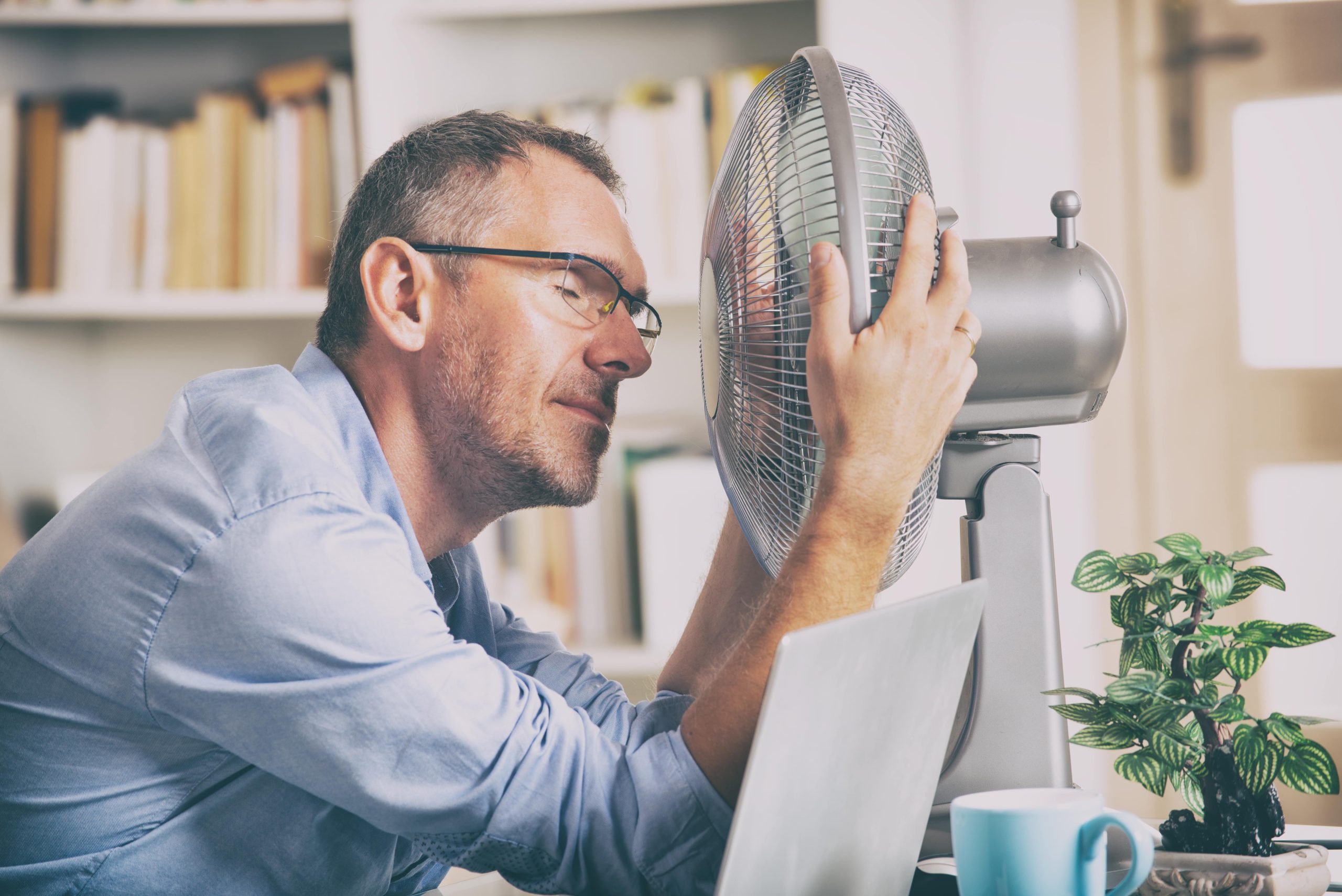BLOG
How to keep your workers safe in hot weather

With the Met Office predicting that 2023 will be hotter than 2022, and one of the warmest years on record, there could be cause for concern about the temperature in your workplace.
Hot weather is great for a day on the beach, but it’s not always conducive to a comfortable and productive work environment.
People usually work best at temperatures between 16°C and 24°C, although this varies depending on the kind of work being done. Strenuous work is better performed at slightly lower temperatures than office work, for example.
The Chartered Institute of Building Services Engineers recommend the following temperatures:
- Heavy work in factories: 13°C
- Light work in factories: 16°C
- Hospital wards and shops: 18°C
- Offices and dining rooms: 20°C
Temperatures that vary too much from this can become a health and safety issue.
If workers get too hot, they could experience dizziness, fainting, or even heat cramps. In very hot conditions, your body’s blood temperature rises – if it exceeds 39°C, there’s a risk of heat stroke or collapse. Delirium or confusion may occur above 41°C and blood temperatures at this level can prove fatal.
But even on the lower end of hot temperatures, heat leads to a loss of concentration and increased tiredness, which means workers are more likely to put themselves and others at risk. Working in the sun also increases the risk of skin cancer.
Do you need support?
Speak to us for an honest, no obligation chat on:
0345 226 8393 Lines are open 9am – 5pm
Maximum workplace temperatures: what the law says
You might be surprised to learn that the law doesn’t specify a maximum temperature for workers. However, all employers have a general duty to take “reasonably practicable” steps to protect the health and safety of their workforce under the Health and Safety at Work etc Act 1974.
Employers also have a duty under the Management of Health and Safety at Work Regulations 1999 to assess the risks present in the workplace and put in place any necessary prevention or control measures. This includes the risks of working in hot temperatures, or exposure to the sun.
Beyond these general duties, the Workplace (Health, Safety and Welfare) Regulations 1992 specifically state that temperatures inside workplace buildings must be “reasonable”. The Trades Union Congress provides some guidance, suggesting a maximum temperature of 30°C (27°C for those doing strenuous work), so that employers and workers know when action must be taken.
The Approved Code of Practice to the Workplace Regulations provide some examples of what employers can do to ensure a reasonably comfortable temperature in the workplace. Recommended steps include:
- Insulating hot plants or pipes;
- Providing air cooling plants;
- Shading windows; and
- Sighting workplaces away from places subject to radiant heat.
If this isn’t sufficient, the Code says employers must install local cooling systems, increase ventilation, or install fans. It also says that other factors must be taken into account when assessing what a “reasonable temperature” is. This could include:
- Protective clothing;
- Physical activity;
- Radiant heat;
- Humidity;
- Air movement; and
- The length of time someone does a job.
Additionally, the Code requires employers to provide:
- A suitable number of thermometers to allow workers to check indoor temperatures.
- Effective and suitable ventilation (however, make sure this isn’t simply done by opening doors that act as fire doors).
Other regulations to be aware of
In addition to the above, there are a number of other regulations employers must comply with in hot conditions. These include:
- The Personal Protective Equipment at Work Regulations 1992, which say personal protective equipment (PPE) must be suitable for the risks, for the workers using it, and for the working environment. This means that if PPE is used in hot weather – inside or out – it must be designed to keep workers as cool as possible.
- The Manual Handling Operations Regulations 1992, which require employers to take into account other factors, including hot and humid conditions.
- The Health and Safety (Display Screen Equipment) Regulations 1992, which require that “equipment belonging to any workstations shall not produce excess heat which could cause discomfort to operators or users”.
- The Management of Health and Safety at Work Regulations 1999, which specifically state that employers must assess risks to pregnant women from extremes of heat as they tolerate heat less well. The regulations also say that young workers must not be employed in situations where they are likely to be exposed to extremes of heat.
Practical ways to keep workers cool
Being too hot is one of the biggest causes of complaint by workers during a spell of warm weather – especially when they’re not used to it.
However, measuring air temperature from a thermometer is only one part of what must be considered, as variables such as humidity, heat sources, clothing, and whether there’s any breeze or wind, all impact the way in which people are affected by heat.
Heat effects also vary according to a person’s weight and age.
You can more accurately assess the situation in the workplace using a wet bulb globe thermometer or an electronic equivalent that measures humidity. The comfort range for humidity is between 40% and 70%.
In determining whether the work environment is too hot, a good rule of thumb in determining whether or not workers feel comfortable – if they don’t, then something should be done.
Simple measures worth considering include:
- Relaxing the dress code – the issue here will be whether or not the clothing is acceptable in the context of the job.
- Redesigning the work area – moving people away from windows or installing reflective film or blinds to windows.
- Installing fans or natural ventilation – providing fans or windows that open can help workers feel cooler.
- Allowing flexible working arrangements – giving staff the flexibility to finish either earlier or later can help.
If none of these measures sufficiently reduce the level of heat and staff are still uncomfortable, then a competent heating and ventilation engineer should be employed to survey the workplace. They would recommend a permanent solution.
Indoor workers in factories, mines, boiler rooms, kitchens and laundries are even more at risk of heat stress or dehydration. Seek professional advice on both reducing heat and protecting such workers.
Workers should also be told how to avoid heat stress and dehydration, and how to recognise early symptoms.
Don't forget outdoor work
Although the Workplace Regulations mentioned above only apply to indoor workplaces, that doesn’t mean you don’t also have a duty to employees working outside in hot weather.
There are around 100,000 new cases of skin cancer every year in the UK, albeit under 10% are malignant. Most cases are caused by exposure to sunlight and are easily preventable.
Outside workers should be given sunscreen and hats. Employers should also:
- Make sure protective clothing is light and suitable;
- Ensure staff always have access to fresh water and regular breaks; and
- Ideally, organise work so that so workers aren’t outside during the hottest part of the day.
Working outside in the heat can also lead to dehydration and heat stress, and cause fatigue, muscle cramps, rashes, fainting. In severe cases, it can result in loss of consciousness.
Make sure that an adequate risk assessment has been carried out and controls are in place to prevent workers suffering from sunstroke, excess sun exposure, dehydration or heat stress.

Related Content
Don't sweat it, get support from WorkNest
WorkNest helps organisations protect their workforce and ensure compliance with all relevant regulations all year round through dedicated consultant support, on-site audits and real-time risk management software.
To find out how our fixed-fee Health & Safety support can help you to meet you obligations confidently, get in touch with our team on 0345 226 8393 or request your free consultation using the button below.




